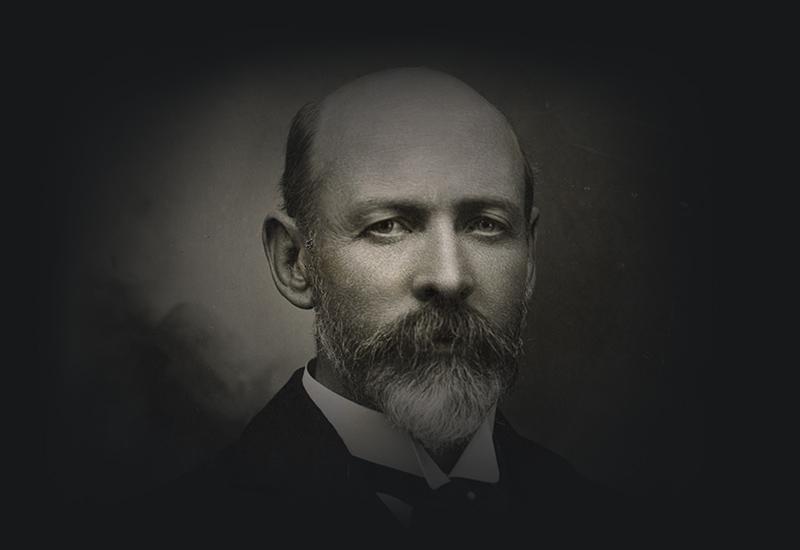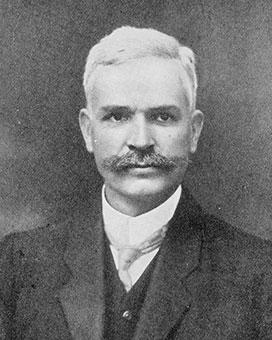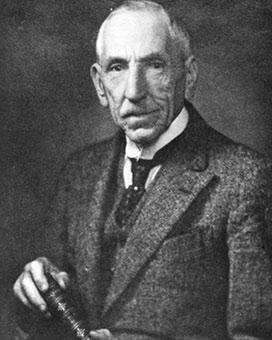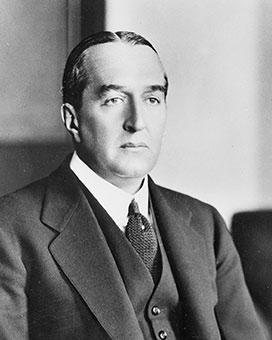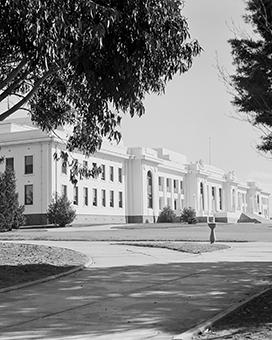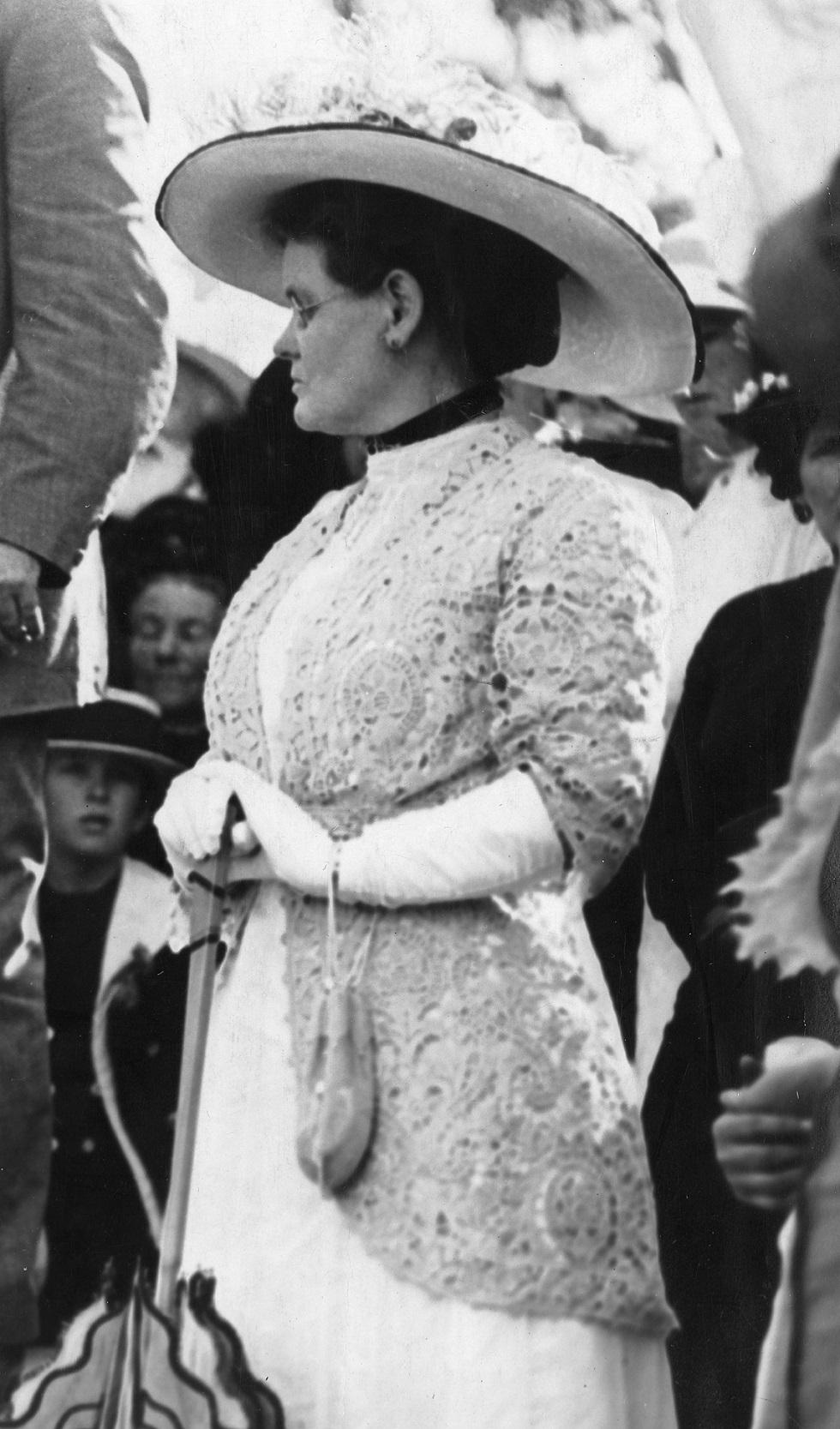
Mary Cook was a familiar figure at events in Joseph Cook's Parramatta electorate. NAA: M3614, 8
Mary Cook was prime ministerial wife from 24 June 1913 until 19 September 1914. There is little evidence of her work in this role, or of much of her 30 years as a parliamentary wife from 1891 to 1921.
Records from the latter years of the 1914–18 war, when the elder of the Cooks’ nine children were adult, offer a fuller picture. Details of Mary Cook’s work in the Parramatta electorate, in the organisation of the Australian Red Cross Society, and as a ministerial wife can be found in records of the period to 1921. Evidence of her work at Australia’s High Commission in London from 1921 to 1927 also awaits exploration.
When she married Joseph Cook in 1885, Mary Turner was 22 years old and had been a schoolteacher for 8 years. Beginning as a pupil teacher at Chesterton Girls’ School, by 1885 she was an assistant mistress. Like Joseph Cook, she came from a Staffordshire mining family. Like Cook, her brothers had left school while very young to work in the mines.
Mary Cook appears to have had a role in helping both her brothers and her husband to overcome their lack of education. Usually considered self-taught, in fact Joseph Cook had the advantage of a skilled and devoted teacher at his side. At their Lithgow home, Cook studied in the evenings, moving from writing and grammar to typing and shorthand, and then to book-keeping. He also began studying to become a Methodist minister.
By 1891, 6 years after their marriage and emigration to Australia, the couple had 3 small sons, and Joseph Cook had a seat in the New South Wales parliament. By 1901 they had 6 children, and he had won the Parramatta seat in federal parliament. For the 20 years he sat in the federal parliament, Joseph Cook spent much of his time in Melbourne, where parliament sat. Mary Cook managed their large household in Sydney, with 9 children born between 1886 and 1906.
Few records exist to indicate Mary Cook’s public roles – as wife of a deputy leader of the Opposition (1907–09), of Defence Minister (1909–10), of the deputy to an ailing Alfred Deakin (1910–13), as prime ministerial wife (1913–14), nor as wife of the Leader of the Opposition (1914–17).
When Joseph Cook became Navy Minister in William Hughes’ government in 1917, the Cooks’ children were aged between 20 and 11 years. Mary Cook was by then very active in the New South Wales Branch of the Australian Red Cross Society, and in Cook’s electorate of Parramatta. She spoke at meetings there in the 1919 election campaign, and also deputised at ministerial events, such as the unveiling of an Honour Roll dedicated to the 1914–18 servicemen and women in General Granville Ryrie’s Manly electorate.
In 1918, Mary Cook and Mary Hughes attended events in London for the Imperial War Conference and the Cooks made a triumphal return to their home towns in Staffordshire. Both women represented their Red Cross branches. With Margaret Fisher, wife of Australia’s High Commissioner, they were also involved in work for Australian troops in France, and their families in Australia. During Joseph Cook’s term as High Commissioner, Mary Cook played a key role for the Australian Red Cross Society, including representing the Society at a meeting of the International Red Cross Board of Governors in Paris in 1923.
The comment of a reporter in 1926, ‘what a real servant of the Commonwealth she is’, summed up Mary Cook’s 6 years of work at Australia’s High Commission in London. From 1921 to 1927, both Australia House and the residence of the High Commissioner appear to have been well-used doorways to London’s social and political networks. Mary Cook was involved in the visits of many hundreds of Australians, from women attending meetings and conferences, to parties of boys brought from Australia to learn something of life in Europe.
Her role as an advocate of the emigration of British women to Australia and in the promotion of Australian produce was well recognised at the time. She was photographed and interviewed at every public event, whether reassuring the anxious of ready employment in domestic service, bidding farewell to young girls emigrating under the Barnardo’s scheme with sprigs of wattle, or promoting ‘empire cookery’.
The Cooks returned to Australia in 1927, enjoying an active retirement. On 24 September 1950, 3 years after her husband’s death, Mary Cook died aged 87, at her Bellevue Hill home in Sydney.
Mary Cook’s services to Australia were acknowledged with the award of Dame in the Order of the British Empire in 1925. Her role in Australian political history, detailed in still little-used records, awaits examination.
Sources
- 'Dame Mary Cook’, The British Australian and New Zealander, 15 April 1926, p. 19.
- The Fighting Line, 20 August 1918, p. 20.
From the National Archives of Australia collection
- Sir Joseph and Dame Mary Cook collection, NAA: M3580

